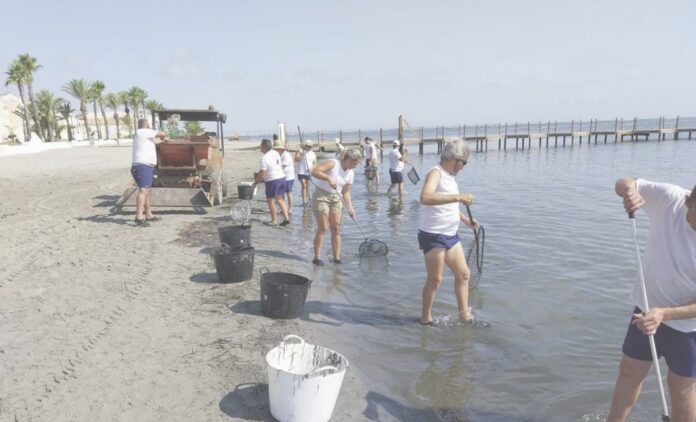From removing biomass stuck on the shores of the Mar Menor to removing thousands and thousands of jellyfish, volunteers who make up the Community brigades in the salt lagoon begun early on Monday morning to extract specimens of ‘Cotylorhiza tuberculata’ or ‘fried egg’ jellyfish from the water.
Swimming this past weekend has been difficult due to the proliferation of these coelenterates in towns such as Los Urrutias and Punta Brava. The strong Levante winds pushed a significant number of these jellyfish to the western coast of the Mar Menor.
Work will continue over the next few days to remove these specimens from the shore, most of which appear dead or dying. Swarms of ‘fried eggs’ are also visible in the northern basin of the Mar Menor, where most of this species is concentrated.
Only five beaches in the lagoon have anti-jellyfish nets installed this summer: Villananitos, La Mota and La Puntica in San Pedro del Pinatar, while in San Javier they are found on the beaches of Castillico and Veneziola. These barriers have returned to the maritime landscape of the lagoon after two summer seasons without being used.
Local councils such as Cartagena and San Javier, say that they submitted a project to install these nets on their beaches this summer to the General Directorate of the Mar Menor. However, this year the criteria for their deployment depends on the scientific committee of the lagoon, which until now has defended that their use should be an “exceptional measure” due to the effect it can cause to the ecological state of the Mar Menor. In other words, their installation will only be carried out where there is a greater proliferation or concentration, say sources from the Ministry of the Environment.














